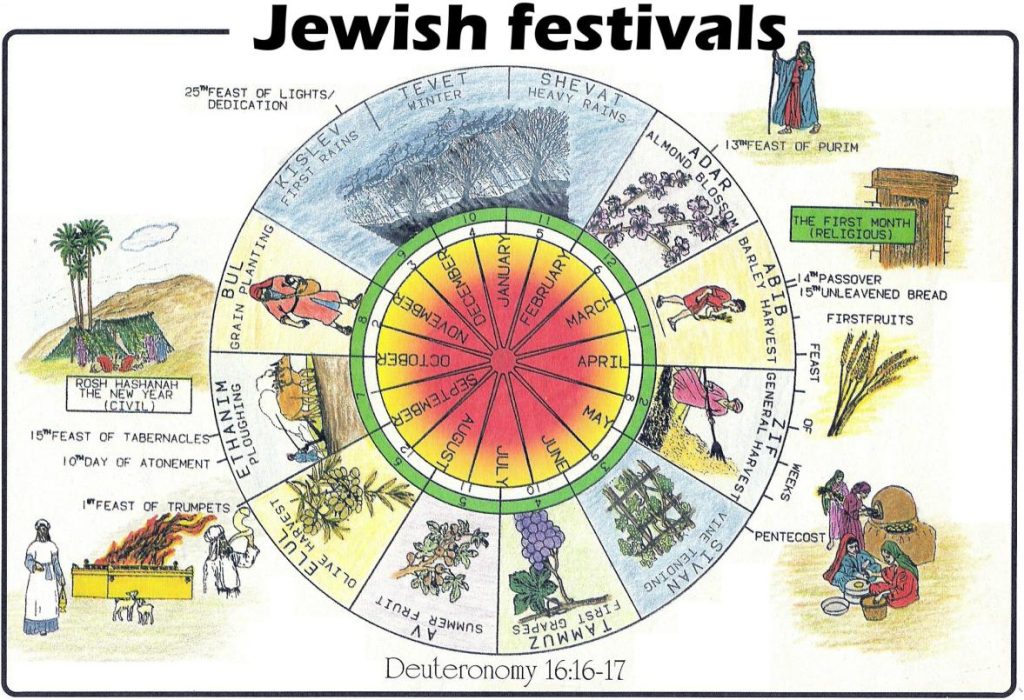The Hebrew calendar was used in Israel in Bible times, and is still used by Jews for religious purposes. It is based on 12 lunar months (354 days) but with an additional month added every few years (7 times every 19 years) to keep the calendar in line with the solar year (365 days). Originally the months began with the observation of a new crescent moon, but over time this was replaced by mathematical rules.
The following chart shows the months and how they line up (approximately) with our modern Gregorian calendar.
Israel had two years, a civil year and a religious year (just as we have both a calendar year and a financial year). The civil year started in the month Ethanim (corresponding to our September/October) with the Feast of Trumpets, Day of Atonement and Feast of Tabernacles. The religious year started six months later with the month Abib (also called Nisan) and included the Feasts of Passover, Unleavened bread and Firstfruits. The other major feast was Harvest (also called Pentecost), 50 days after Passover.


No Comments yet!